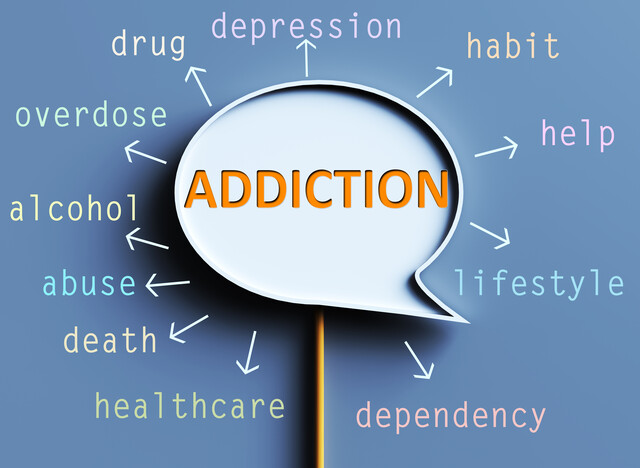How to Test and Detect Substance Abuse in the Workplace
One of the best tools that employers have against workplace drug use is detection. Effective methods of detection can catch and potentially stop someone who is abusing drugs before they cause serious harm to themselves and their peers. In some industries, companies are dependent on detection methods like drug testing to ensure employee safety.
When it comes to drug testing, there is a lot of questions and issues that people bring up. Do you have to? Can you refuse? What if it's wrong? What about cheating? It's one of the most controversial topics in the national discussion about substance abuse. Regardless of what your personal views are on the matter, it is still best to understand what can be done for detecting workplace drug abuse.
What Are Employers Allowed To Do?
From a legal perspective, employers are well within their rights to request that employees take a drug test. According to federal guidelines, any employee that whose job requires a commercial driver's license must go through regular testing. Federal employees are also expected to undergo workplace drug testing. Any detection method for those employees must test for 5 specific drug types at minimum according to the law:
-
Phencyclidine or PCP
-
Amphetamines like as meth or Ritalin
-
Cocaine
-
Opiates like heroin, prescription pain relievers, and OxyContin
-
Cannabis/Marijuana
Many companies that offer drug testing services will often include more than those five. As new drugs enter the illegal market and their usage grows, the tests are often expanded and updated.
Non-federal laws concerning workplace drug testing vary by state, with some states having no general requirements for employers. However, any employee of a state will often need to submit to drug testing as part of their job just as federal employees do. Employers are responsible for arranging the testing and notifying employees of their results. The employer will also most likely be responsible for paying for any testing costs.
With drug testing employees that are not required to do so by law, the decision is often left to the employer or company owner. On average, employers will only do drug testing when hiring someone new; workplaces with safety issues will be more likely to instill a policy of regular drug testing. Employees may refuse testing, but it may result in penalties based on the company's established policies. It is the responsibility of the employer to establish what those policies are and make them available for employees.
Employers cannot test employees without their notification. Prior notice of drug testing must be given for all employees, even in instances of "surprise" drug tests. This helps employees who are required to go to a testing facility make the necessary arrangements to do so, even though there is the chance that notification may give some people time to try and cheat. As not everyone has access to reliable transportation, some employers do provide options for travel arrangements to the testing facility for their employees.
An employee must also give consent for the testing. Usually, this is obtained through some of the paperwork they filled out when they first joined the company and is applicable the entire time they are on staff. For employees who are under the age of 18, parental consent is highly recommended even if your state does not require it. No matter how strong an employer's suspicions are of an employee's drug use, they cannot force them to submit to testing. That means they can't steal a strand of hair or take a piece of gum you spit out and send it to a lab. Outside of television, it's illegal and not likely to work out in the employer's favor. An employer can also not publicly disclose test results; that information will remain between the employee and their boss or supervisor.
Testing Methods
Currently, there are five methods for drug testing available. They each have their own advantages and disadvantages for both employers and employees. The cost per test varies from method to method, and some testing facilities may charge more than the average.
-
Saliva Tests--Averaging anywhere from $15-75 per test, saliva tests are one of the least-intrusive testing methods. Samples can be easily collected through a mouth swab and are harder for a person to alter. They are a better option for detecting recent drug use compared to other methods. While there isn't any cut-off for concentration or drug levels in a sample--which means even trace amounts could generate a positive result--this makes them less reliable and easily contestable compared to other methods.
-
Hair Tests--Still a less intrusive option, hair tests can be a bit more expensive ($100-150). They require a significant sample, like what a hairdresser takes with each cut, so a single strand is not enough. Hair tests have the potential to detect past usage that occurred anywhere from a week to 90 days before testing. This is because traces of what a person puts into their body builds up in their hair follicles over time. In some cases, a hair test can identify when a person last used a drug--alcohol use isn't detected in hair tests--but there are some exceptions, like opioids. There are some products that claim to cleanse or wash away traces in order to beat hair tests, but these rarely work.
-
Urine Test--Probably the first thing that comes to mind when you think of drug testing. It's one of the most cost effective options, usually no more than $50 per test, and also the most popular. A standard urine test can detect recent use within the last week, but it depends on the type of substance used. However, it is one of the most invasive tests; many facilities will be present in the room with the person as they urinate to prevent tampering. It can also be easily tampered with and is prone to false positives.
-
Sweat Tests--A rather rare option, sweat tests usually require the person to wear a patch on their skin to collect perspiration. It must be worn for an extended period of time in order to get a testable sample. While it can detect current usage, the accuracy of sweat tests are as controversial as drug testing itself. In theory, there is too large of a chance for contamination from a person's surroundings (smoke, perfumes, toiletries, etc.).
-
Blood Tests--Super invasive, expensive, and accurate. Blood tests are rarely used for workplace drug tests; law enforcement and hospitals are the more common practitioners of this method. In the event of a workplace accident where there is evidence of substance abuse being at fault, a blood test may be used for confirmation.
Many labs will simply provide employers with a simplified version of the test results, usually marking what illicit substances the person tested positive and negative for. In some cases, the results can be a matter of a simple "pass" or "fail." The interpretation of these results are up to the employer, and they do have the option of viewing a more detailed sample report. Once a test has been deemed positive for drugs or alcohol, the situation is in the employer's hands.
Developing a Policy
It is the responsibility of the employers to devise a system for workplace drug testing. This means it is up to them when the testing is done, where it is done, and what actions need to be taken when the results are in. Any and all policies regarding drug testing should be firmly laid out before the company begins testing their employees. Employers may want to consider consulting with legal counsel to ensure that they are acting within their legal rights and that there are no violations of worker's rights.
Most drug testing policies are straight forward to avoid any unnecessary complications. They often include information on the following:
-
Employee Expectations--Any expectations an employer has regarding employee drug testing. Most company's drug testing policies dictate what rights an employee has under law regarding testing and their results. It also covers any information about consenting to tests and under what circumstances an employee may be requested to submit to testing.
-
Testing Facility--Unless you work at a lab or testing facility, the tests are going to be sent out to a third party for analysis. Some businesses sign a contract with a specific testing facility to do all of their employee drug testing to provide consistency. Including the testing facility in the policy usually is done for the sake of providing employees with that information, especially if they choose to contest their test results. Any changes in the company's relationship with the testing facility tend to be reflected through updates or amendments to the policy.
-
Results--It is best to establish a time frame for when an employee can expect the result to be available. This information is established via the testing facility and the method used. Employers should also include what information will be included in the results, how the employee can access them, and what the response will be to the findings. There should also be policies about contesting drug test results, including how and what options are available.
The Drug Testing Controversy
Drug testing in general is a rather controversial topic. There are many who believe that it can be abused by employers as a means of racial discrimination and profiling. Instances where "random" drug tests have only been done for minority employees seem to support this belief. Many opponents claim these instances reinforce harmful stereotypes about both minorities and addiction, which generate more problems than they fix. Fears about employers intentionally altering the results of a drug test as retaliation against an employee have also been brought up as part of the controversy.
There is also significant room for error when it comes to drug testing. Some of the methods listed in this lesson have their own pitfalls and potential for incorrect results. False positives are not unheard of with drug testing. As mentioned, there are certain legal substances that can register as illicit in a drug test. While there may be additional testing to confirm and most employers allow employees to contest their results, there are some who use a positive drug test as immediate grounds for dismissal.
A false negative result is also possible, but it is dependent on the substance being abused and the timing of the test. Certain drugs pass through a person's system quickly and leave minimal trace. A user could potentially pass if the test is administered outside of the time frame when the drug is in their system. Depending on how much notice a person is given, an addict could wait on their next dosage until after they've been tested. Many of the tests also require a certain amount of a drug to be in the person's system for there to be a positive result. If enough of the drug has metabolized or passed through urination before the test, it is possible a user could pass while using.
There is also the potential for cheating, such as having someone else submit a sample in place of the person with the addiction. However, there are a few precautions in place to help reduce these instances. For example, there are testing centers that require a photo ID before submitting a sample, which stops people from sending in a friend in their stead. Sometimes with urine drug tests, a technician will be in the bathroom with the person submitting the sample, watching them. Both sides of the argument have suggested that doing so may be pushing things too far in regards to employee privacy.
Proponents of drug tests have pushed for better standards and more uniformity amongst testing providers. This has been done in part to quell some of the arguments from the opposing side and close some acknowledged loop holes. Some have even worked to make drug testing more accessible and affordable for smaller businesses. There has also been discussions with employers and companies who employ zero tolerance policies, where any positive result is grounds for termination without the option for appeal, about making adjustments.






























